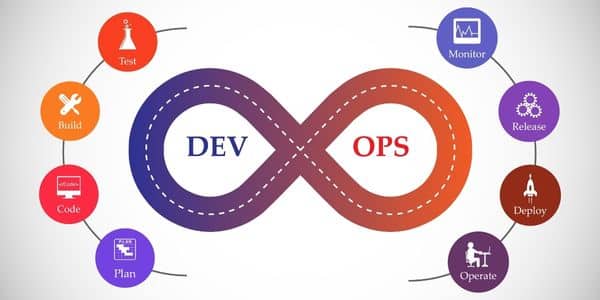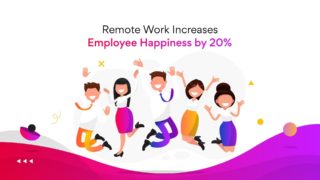
What Is the Shift-Left Approach and How You Can Prevent It from Making Your Developers’ Job Harder?
The software testing market is estimated to reach $70 billion by 2030. An enormous market such as this is bound to experience continuous evolution, especially with the growing expectations of deploying high-quality software in shorter durations. Automatically, IT companies are looking for alternatives to meet the market’s need to shorten software release cycles. One such alternative is the shift-left approach, which has recently gained massive popularity. While it offers multiple benefits, it also comes with a stark disadvantage: draining developers’ productivity.
This blog will discuss what this approach means, the shift-left benefits in software testing, and how you can ensure it doesn’t affect your developers.
What is the shift-left approach in DevOps?
Let’s first review the traditional software development model to understand the shift-left approach. Here’s what it looks like:
Stage 1: requirement analysis -> Stage 2: feasibility study -> Stage 3: architecture design -> Stage 4: software development -> Stage 5: software testing (QA) -> Stage 6: software/product deployment
As you can see, the testing phase enters the development cycle towards the extreme right, i.e., at the end of the process. The shift-left approach literally pushes the testing to the ‘left,’ which is at the early stage of the development pipeline.
Shift-left process: by definition
DevOps teams adopt shift-left testing to begin security and testing processes as early in the SDLC (software development lifecycle) as possible – which can be a boon to developers. Theoretically, the shift-left approach saves a developer’s time and effort by decreasing the work they need to do later in the development pipeline.
You can also apply the shift-left strategy on various SDLC processes, as it simply means pushing a particular process earlier in the development process than when it should’ve traditionally begun.
For instance, if you shift software security left, you prioritize security when your developers design the code. The usual process here would be to wait till they’ve built the complete application to start addressing security risks.
Also, read: 10 Popular Software Testing Trends in 2023
Shift-left benefits: theory vs. reality
Theory
On paper, the shift-left approach is advantageous as it allows development teams to identify problems early on in the SDLC. This feature is helpful as problems are easier to solve when you detect them as quickly as possible.
For example, if your developer or QA team detects an input validation risk in a new source code, they just update it to fix the issue. Solving such a problem would be more challenging if it remained unidentified until the developers had already built the source code and written the other code based on it. Here, the developers would probably have to make much bigger changes to the code and even recompile it after the changes.
Reality
Yes, shift-left development is helpful as it saves resources and reduces the threat of introducing severe software issues into production environments. Plus, the shift-left approach also helps to increase efficiency in the SDLC, improve product quality as the bugs are detected earlier than usual, and reduce time to market.
However, there’s a massive potential disadvantage to implementing shift-left testing principles. They often lead to developer and programmer burnout as shifting-left increases a developer’s work and involves them in workflows that typically require other engineers.
For example, QA (quality assurance) engineers usually work on performance testing during the SDLC. Here, developers provide code to the QA team, and they test it. But if you want to shift left performance testing by testing code as soon as it’s written, you will either need your developers to run the tests or incorporate the QA engineers into the development team so that they can run tests whenever new code is ready.
Also, read: What Is Software Quality Assurance, and Why Is It Important?
Burnout isn’t the only problem
Apart from developer burnout, another problem with the shift-left approach is that a developer is more likely to face the blame if anything goes wrong. When adopting a shift-left strategy, you’re likely to ask your developer to also act as a QA and security engineer. When that happens, the actual QA and security engineers in your team can blame the developers for security or performance bottlenecks.
How to ensure the shift-left approach doesn’t hurt your developers?
The above-mentioned problems don’t mean you must discard shift-left testing. Shift-left testing isn’t an inherently bad idea and does offer actual benefits. All you need to do is adopt the approach in such a manner that it doesn’t hamper your developers’ productivity and lets the SDLC run seamlessly. Here’s how you can do so.
-
Clearly defining how the shift-left strategy is implemented
Organizations that want to shift left must consider the added burden it puts upon their development teams. Hence, they must ensure that shifting left doesn’t make their developers’ jobs harder. This process begins with specifically defining how the company decides to shift processes left.
More often than not, the shift-left process is vaguely defined, creating scenarios where a developer is burdened with more than they can handle to operate within the shift-left approach. Instead of this, you can make the process open-ended where teams operate according to their assigned roles and responsibilities. For instance, before shifting left the testing or security, you can assign that your developers will perform A, B, and C tasks, while your QA team will work on X, Y, and Z, and they will stick to that. -
Include developers in testing activities
It’s a good idea to let your developers test their code before deploying it to the main branch. This way, the merged code is less error-prone and cleaner. Moreover, an individual code unit is easier to test as they are smaller, and hence, more navigable. This practice ensures that the developer doesn’t have to do much when testing such code and has enough on their plate to manage all tasks effectively. -
Include your QA testers early on
The shift-left approach works best when you include your QAs from the very first brainstorming session. This way, they’re aware of the fundamental concepts and your developers’ ideas about building the app or website, allowing them to create better tests for the testing phase.
Additionally, including QAs early on also gives a developer a clear idea about the potential bugs that can emerge and how to avoid them. This clarity further reduces the burden on developers when you shift left as they have a better understanding of what bugs to tackle and overcome. -
Implementing a blameless culture
Lastly, it’s also important to foster a blameless culture within your organization when you adopt the shift-left approach in DevOps. As mentioned earlier, developers can easily face the blame for things going wrong when they assume extra responsibility. With a blameless culture in place, the entire software development team shares collective responsibility for any issue. A culture like this reduces the risk of blaming specific team members, in this case, the developers, allowing them to work with maximum productivity.
Also, read: 9 Effective Ways to Improve Remote Work Productivity as a Developer
The takeaway: What is the benefit of the shift-left approach?
Ultimately, the shift-left approach should help developers, along with everyone else on the team, save time and energy while creating high-quality software. However, this is only possible when you take the necessary steps to ensure the shift-left strategy doesn’t cause developer burnout.
Having said that, there are two sides to every coin. In this case, while you put effort into shifting left to the right way, your developers must be skilled and mature enough to step up to the task when needed. Shifting left means they will definitely have a few extra tasks on their plate, and the developers must have the right set of technical and soft skills to handle them.
If you’re looking to hire pre-vetted developers at unbeatable prices, we’ve got you covered.
At Turing, we offer the most high-quality remote developers with the help of our AI-powered Talent Cloud. The Talent Cloud uses over 20,000 ML signals, including job descriptions, past experience, interviews, and vetted skills to source and provide you with deeply vetted developers aligned with your needs. Head over to Turing’s Hire Developers page to know more.
Tell us the skills you need and we'll find the best developer for you in days, not weeks.






































